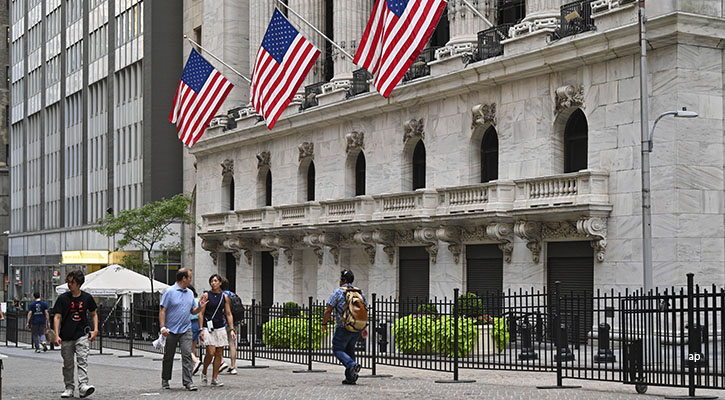
The Morningstar US Market index hit a record on Wednesday, January 24, meaning stocks have now recovered all the losses that began piling up at the beginning of 2022.
Surging technology stocks pushed the index over the line to record territory. The S&P 500, which is weighted more heavily toward large-cap growth stocks, hit its record on Friday. The lag between the two records is another indication of the outsize impact megacap tech stocks are having on the market.
After returning an eye-watering 25.8% in 2021, the Morningstar US Market index took a nosedive in 2022 and ended the year down nearly 20%, as stubbornly high inflation prompted rapid interest-rate hikes from the Federal Reserve. Those headwinds pushed stocks “near their greatest discounts to our valuations over the past decade,” says Dave Sekera, chief US markets strategist at Morningstar.
But 2023 was a different story. By its end, stocks were up more than 26% and traded much closer to Morningstar’s fair value estimates. The market’s new high comes a little more than two years after the US Market index notched its previous record on January 3, 2022.
Why Did Stocks Rebound?
Markets started 2023 on a tear as a long-expected recession failed to materialise, the job market remained strong, consumers continued to spend, and pandemic-era distortions began to unwind.
The emergence of artificial intelligence technology and the rise of the “Magnificent Seven” pushed markets higher in the spring and summer, according to Sekera. In the first half of the year, the US Market index returned 16.5%, despite the bank failures that rattled investors in March.
It all fell apart in July as the markets absorbed the Fed’s “higher for longer” messaging on interest rates. Bond yields soared to their highest levels since 2007, and stocks floundered.
But it wasn’t long before a raft of encouraging economic data – accompanied by increasingly dovish discourse from Fed officials – sparked a rally in the bond market, with yields falling sharply. That reversal sparked what analysts are calling an “everything rally”, with stocks, commodities, and other financial assets (even crypto) gaining steam as investors piled into bets that Fed rate cuts are around the corner.
The market stumbled in the early days of 2024 but soon bounced back as tech stocks soared amid expectations that the Fed might not cut rates quite as quickly as investors have hoped.
Where Are US Stocks Headed This Year?
Looking ahead, Sekera says the stock market is in a very different place than it was at the beginning of 2023. He says economic growth is again expected to slow, but “that is the only similarity”.
The US stock market is now trading just below fair value, as opposed to when it was significantly undervalued at the beginning of 2023. Monetary policy is now set to ease rather than tighten. Inflation is finally cooling. Many of the distortions and disruptions from the COVID-19 pandemic have finally subsided.
In 2023, much of the momentum in stocks was concentrated in the Magnificent Seven. Sekera says the critical determinant of whether the rally can continue is whether those gains can broaden to other sectors and other types of stocks. He explains some good news for investors: “This is already happening.” He points to consumer cyclicals, industrials, and real estate as sectors that are seeing outsized returns. Mid-cap and small-cap stocks are rallying, too.
Earnings Season Risks
Sekera warns of a potential pullback in February and March as earning season rolls around. He says the concern isn’t that companies will disappoint on earnings but rather that management will be inclined to issue more conservative guidance (and as a result, keep expectations low) as they look ahead to an economic slowdown in the second half of the year.
As that slowdown approaches, the Fed is widely expected to begin cutting interest rates.
So where does that leave investors? “Some of the best opportunities we see for 2024 are stocks that are highly correlated to interest rates,” Sekera says. He points to utilities and real estate as sectors that meet that criteria. There are opportunities in value stocks and small-cap stocks as well.
This article was originally published on Morningstar.com












.png)









